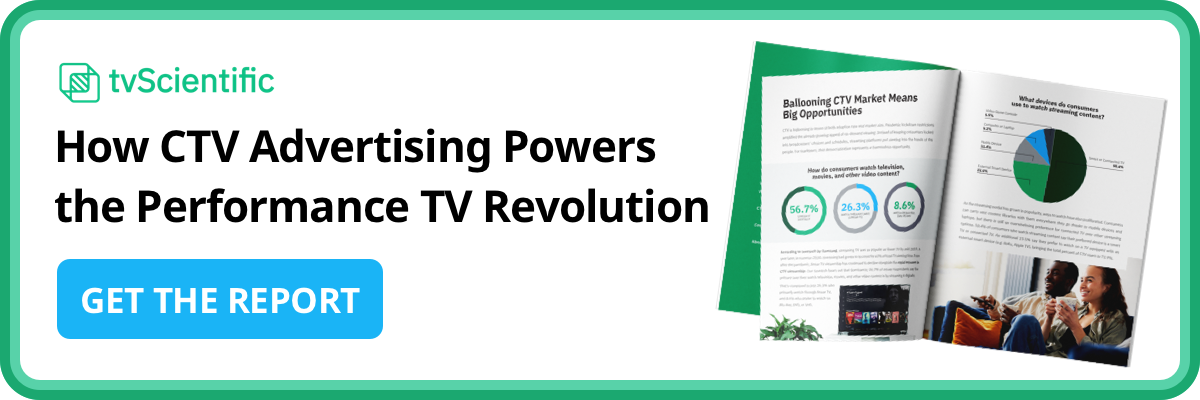OTT advertising success requires a sophisticated approach to testing, but even a modest investment can yield powerful results. Here’s how.
Testing a new advertising channel is smart. Doing it without breaking the bank is even smarter.

Marketers know that ad testing is a critical component of any successful performance campaign, but testing a new channel is a complex process. When you’re ready to introduce television advertising to your channel mix, there’s a strategic way to avoid flushing your initial investment down the drain on the off chance that there might be a return. Even if you are new to the world of TV advertising, this approach will help you gather information about its potential effectiveness without blowing your entire advertising budget. The good news is it’s entirely possible to test OTT campaigns while driving positive ROAS — especially if you commit to CTV as your delivery channel. Here are five tips performance marketers can use to find success from their very first TV ad campaigns:
#1 Don’t Buy Based on CPM
In the world of television advertising, CPM (cost per mille) is a less efficient metric than CPA, or cost per action. Because CTV and OTT advertising unlock such powerful attribution capabilities, CPA is an incredibly effective approach. In other words, the number of viewers taking your desired action — whether that’s visiting your website or making a purchase — is more valuable than the total number of people who see your ad.
For example, imagine your desired outcome is for consumers to scan a QR code featured in your OTT ad. With a CPM structure, you would be able to determine that you spent a certain financial sum to expose a certain number of people to your ad. But buying based on CPA instead allows you to see that spending X dollars running your campaign resulted in Y number of individuals scanning the QR code.
With OTT advertising’s 1:1 attribution model, buying based on CPA provides a more clear idea of the causes and effects of your ad’s influence. Performance marketers should work with an established partner that has invested in supply-path optimized media buying designed to hit CPA goals.
#2 Track Multi-Touch Attribution
Single-touch attribution models assign 100% of the credit for each successful conversion to a single marketing interaction (first-click or last-click, e.g.). While it’s certainly helpful to know which marketing touchpoint eventually leads a consumer to perform the desired action, it’s also important to understand the other touchpoints that contributed to that eventual outcome. That’s why OTT advertisers should use a multi-touch attribution model instead of first- or last-touch models.
Consumers — and OTT video viewers in particular — are highly likely to experience ads for the same brand or product multiple times before they perform the desired action. Performance marketers should choose an advertising solution that tracks and demonstrates the multi-faceted deterministic path from CTV ad exposure to outcome.
#3 Start Small & See ROAS
Although many major advertisers make large investments in the hopes of seeing greater ROAS, not every brand can meet the minimum spend that big-ticket platforms require. By excluding smaller brands from running and testing OTT campaigns, the ad platforms that require a minimum spend of $20,000-$50,000 miss out on the democratizing ethos of CTV advertising. Performance marketers just getting started with television ads should choose a platform with low or no minimum spend requirements; depending on your vertical, you could see ROAS with an investment as low as $500.
#4 Iterate On Creative
Your creative efforts shouldn’t be separated from data-backed strategic thinking. Instead, marketers should design multiple iterations of each creative concept and then test each one in the wild with their intended audience. Whether you’re tracking performance, engagement, or some other kind of metric, the results of the test will reveal which ad creative performs most effectively. In that sense, iterating on creative — and testing every version of your ad — will help marketers get the most out of each campaign flight, even without huge up-front investment.
#5 Test Incrementality Constantly
Incrementality testing measures the results of a test group exposed to a campaign against a non-exposed control group. It’s an advertising best practice across a variety of channels, but many still treat it as a step in the process as opposed to as a constant state. While a one-and-done mindset about incrementality testing will deliver a snapshot of results in a static moment, conducting incrementality testing on an ongoing basis will show how test results shift over time. OTT advertisers — both new and experienced — should choose a partner that can support an “always-on” approach to incrementality testing.
tvScientific empowers performance marketers to activate first-party audiences, build third-party data segments, and retarget visitors from the web back to their connected TV. Our premium ad inventory unlocks access to connected TV devices, native apps and platforms, and the most popular OTT streaming services. Powerful attribution capabilities, real-time reporting, and built-in, always-on testing allow marketers to monitor and measure the incremental value of their connected TV advertising efforts. Ready to learn more about how tvScientific can help you add OTT advertising to your strategy and test your campaigns without blowing your budget? Get in touch today.








